NJ sewer Line Camera Inspections are an Important Piece of Your Due Diligence
It is impossible to determine the condition of the sewer line without doing a NJ sewer line camera inspection. The sewer line is the main waste pipe that carries wastewater from the home to the street connection or tap. The sewer line can be over 100 feet long and be a major expense if there is a problem with it. A damaged sewer line can cause flooding and unsanitary conditions in the home if there is a sewer line backup. You as the new owner of the home are responsible for the sewer line from the home to the street connection. Sewer line repairs or replacement can be very expensive.
LookSmart Home inspections can perform a NJ sewer line camera inspection of your sewer line to determine if there are expensive problems before you purchase the home. Usually, the sewer camera inspection can be performed during your home inspection making it not only very convenient but cost effective. Ask about NJ Sewer line inspections when you schedule your home inspection.
What type of sewer line problems are found when doing New Jersey sewer line camera inspection?
Cracks: Cracks can be hairline type very thin cracks or much larger cracks. Cracks allow for the escaping of sewage into the ground polluting the water table. Cracks also weaken the piping and allow for debris and roots to enter the piping. Any cracking found while performing a NJ sewer camera inspection should be repaired by a qualified sewer line contractor.
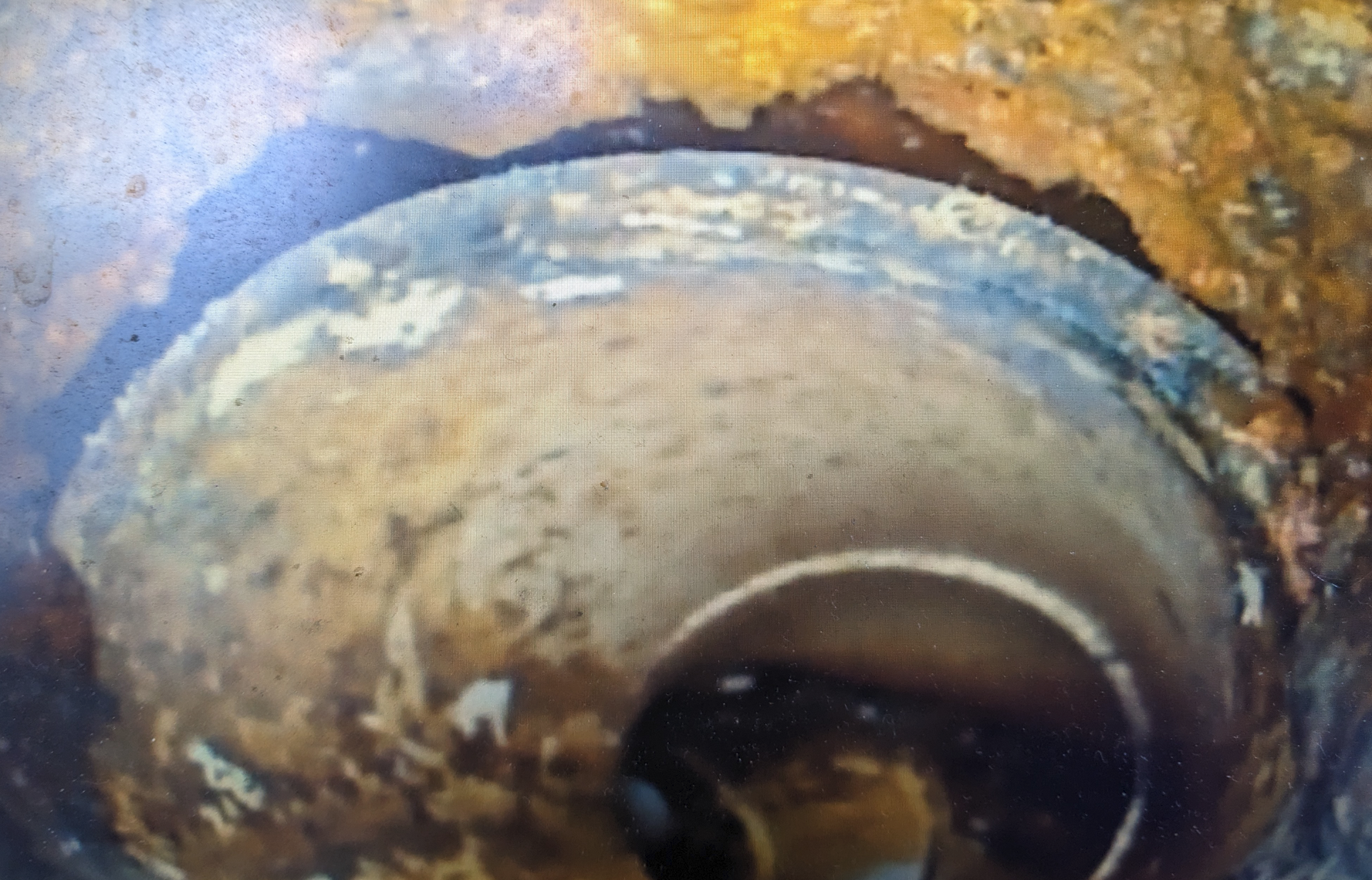 |
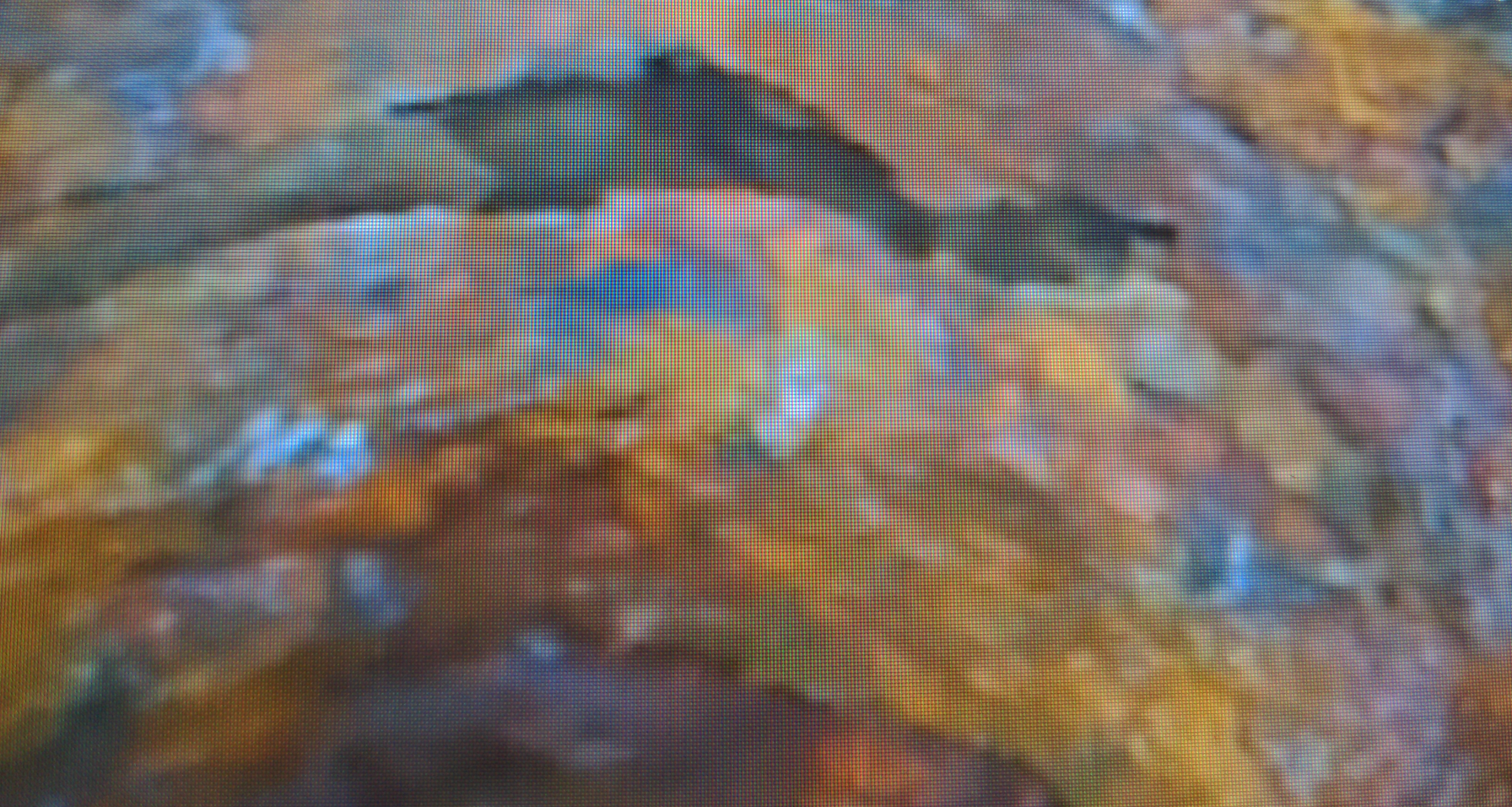 |
| Separation in Sewer Line | Damaged pipe |
Offset pipes: An offset occurs when two sections of the sewer line do not connect correctly. Offsets create lips or uneven connection points in the sewer line where debris can get stuck. Offsets are often caused by settlement of the ground around the piping. If the offset is not substantial roughly ¼ inch or less, then no remediation would be required. If the offset is larger then it can inhibit the flow of wastewater and cause obstruction. The issue is worse if the offset is at the bottom portion of the sewer line. Repair is generally recommended when large offsets are viewed when performing sewer line inspections in New Jersey at the bottom of the sewer line.
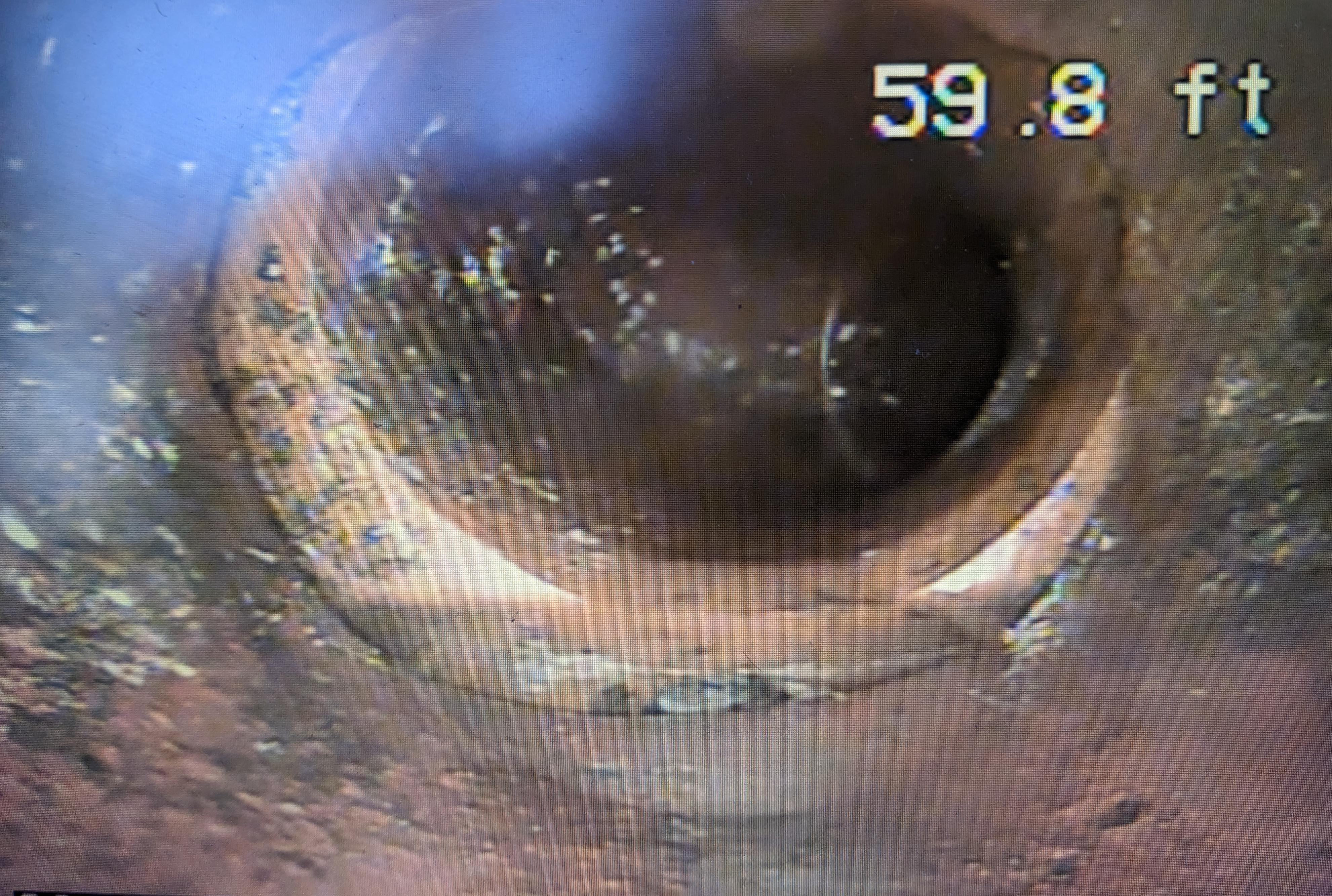 |
|
| Large Offset in Sewer Line |
Tree root intrusion: Tree roots are attracted to sewer lines because they naturally grow toward a water source. The problems are made worse if there are cracks or openings in the sewer line. Tree roots are powerful and can cause significant damage to the sewer line. Root intrusion is more common in older clay or cast-iron sewer pipes. The issue with roots is that you may be able to control them temporarily, but they will grow back quickly. If a NJ sewer line camera inspection uncovers tree roots the sewer line will have to be repaired or replaced depending on the extent of the tree root intrusion problem.
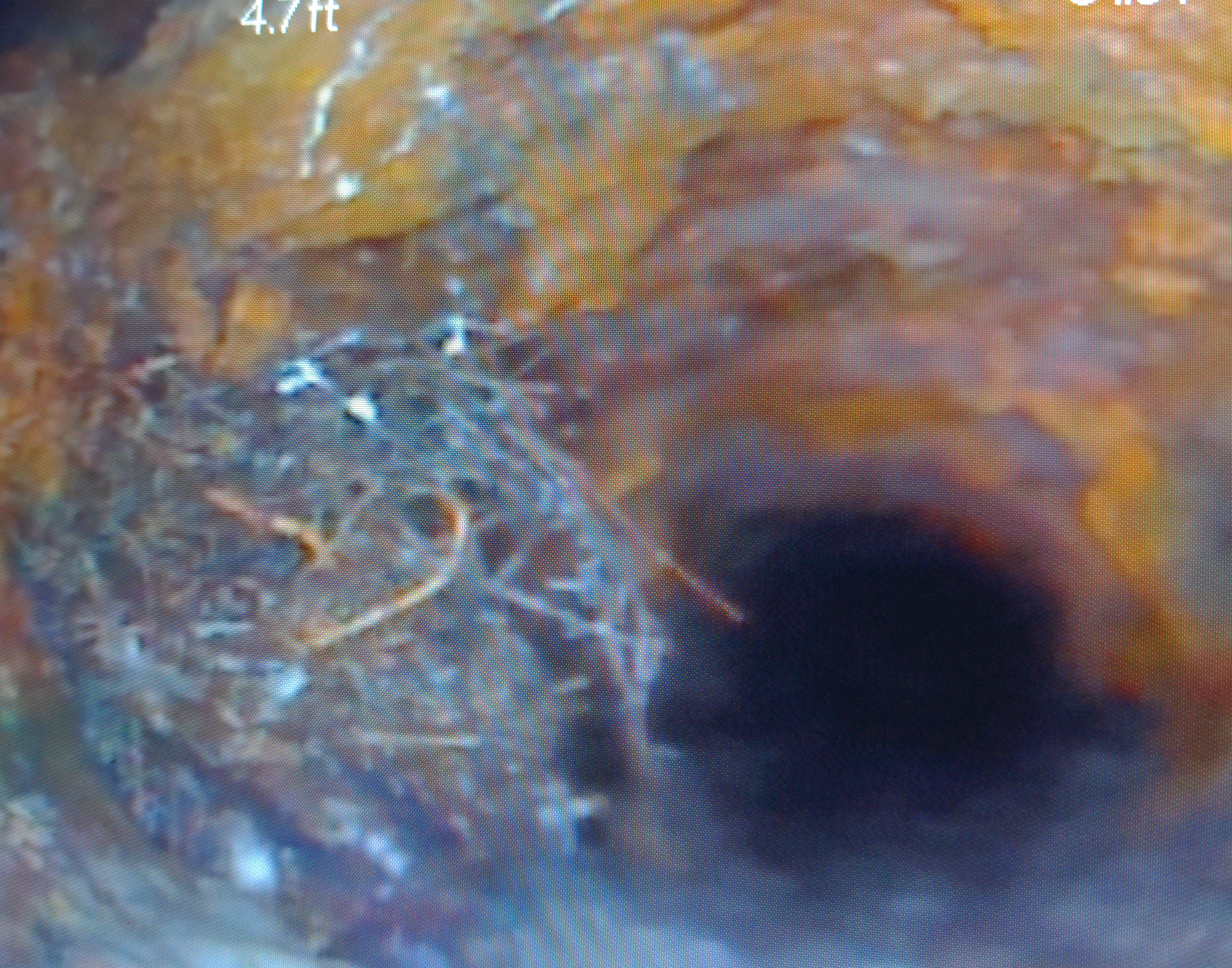 |
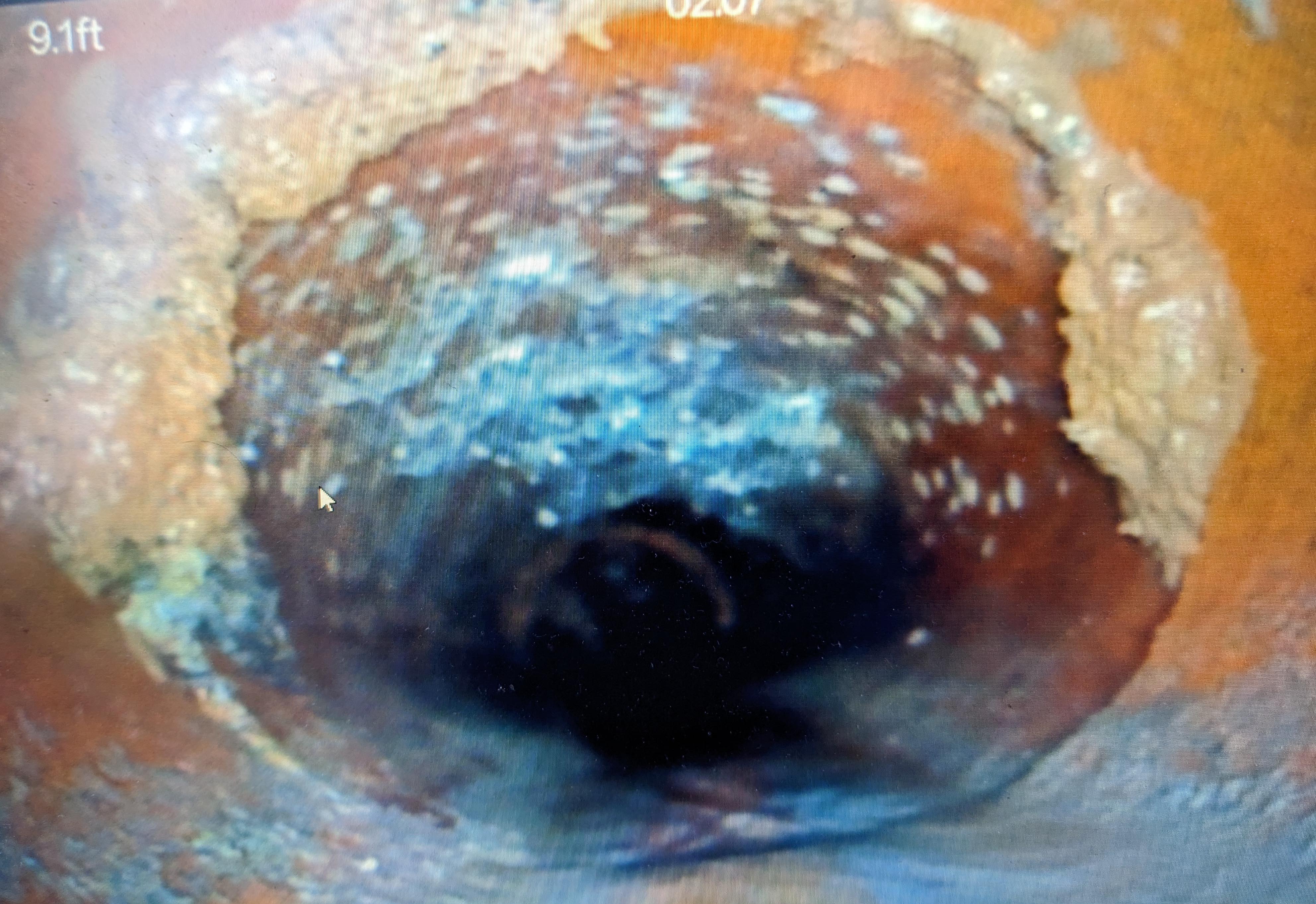 |
| Root Intrusion | Root intrusion in cast iron sewer line |
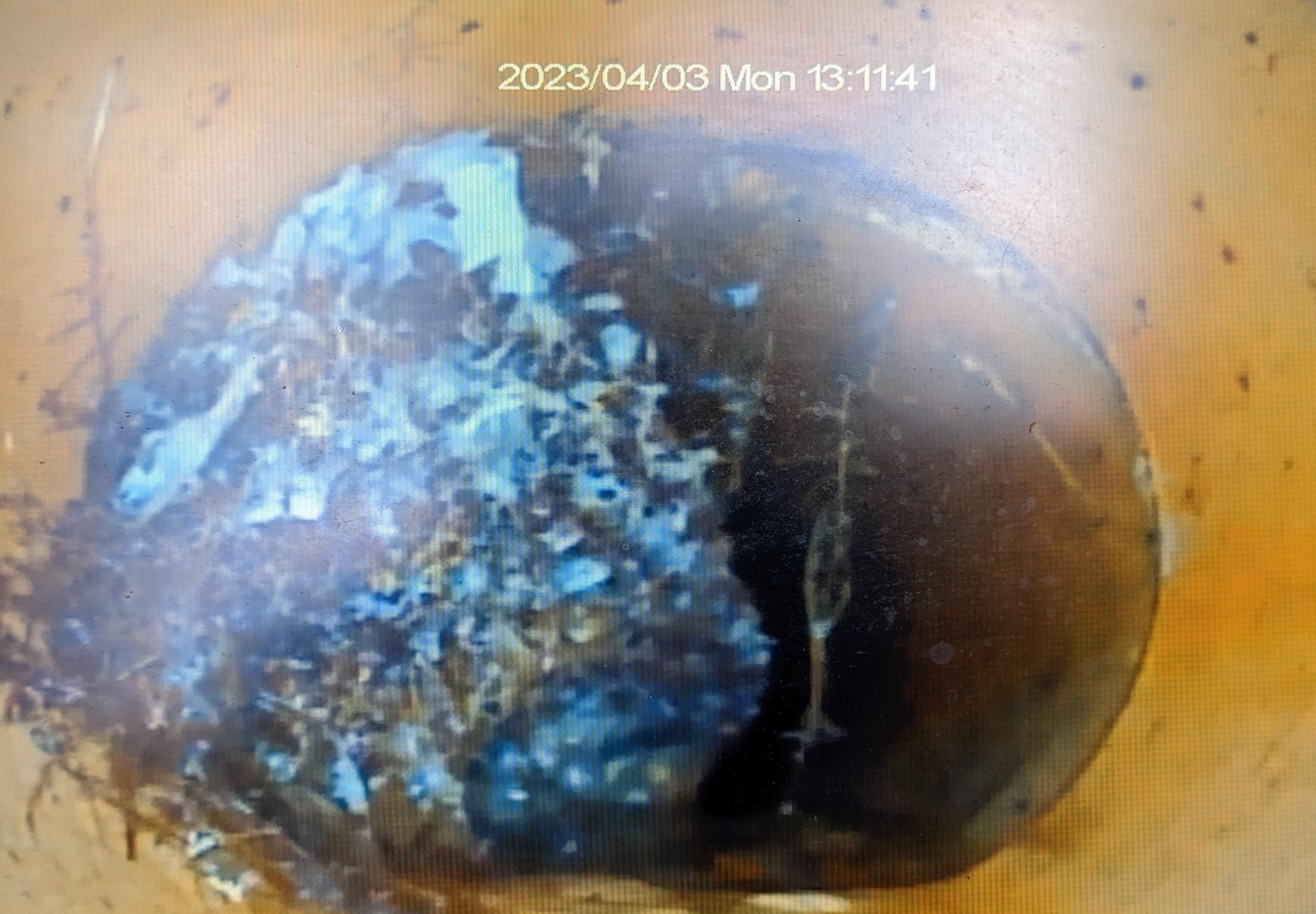 |
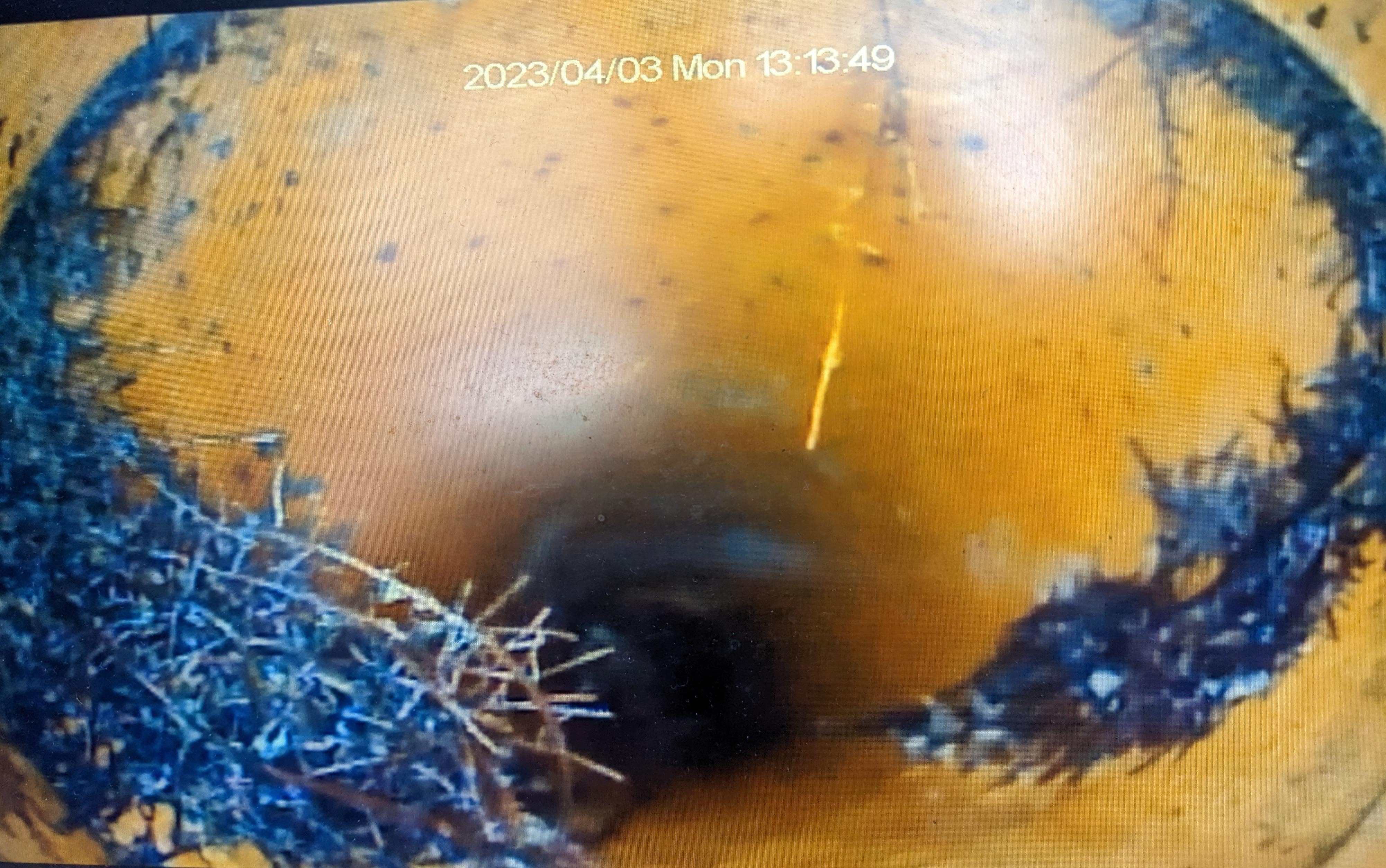 |
| Significant root intrusion | Tree Root intrusion |
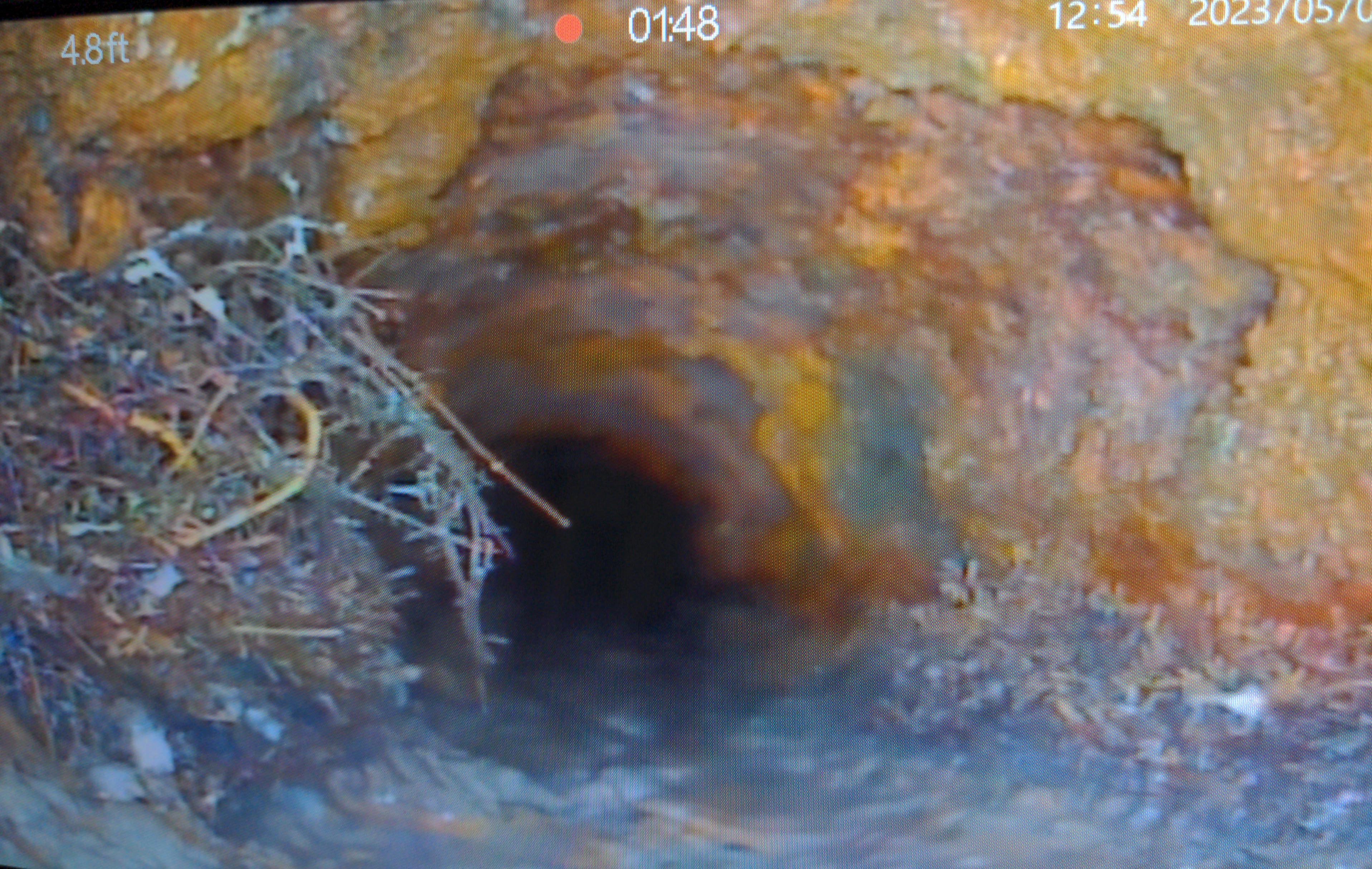 |
|
| Tree roots and cracked pipe |
Water retention: Areas of water retention are referred to as a sag or belly in the sewer line. Bellies can interfere with the flow of waste water. If there is poor inefficient water flow through the pipe, then obstructions are more likely to take place and the probability of sewer line back up greatly increases.
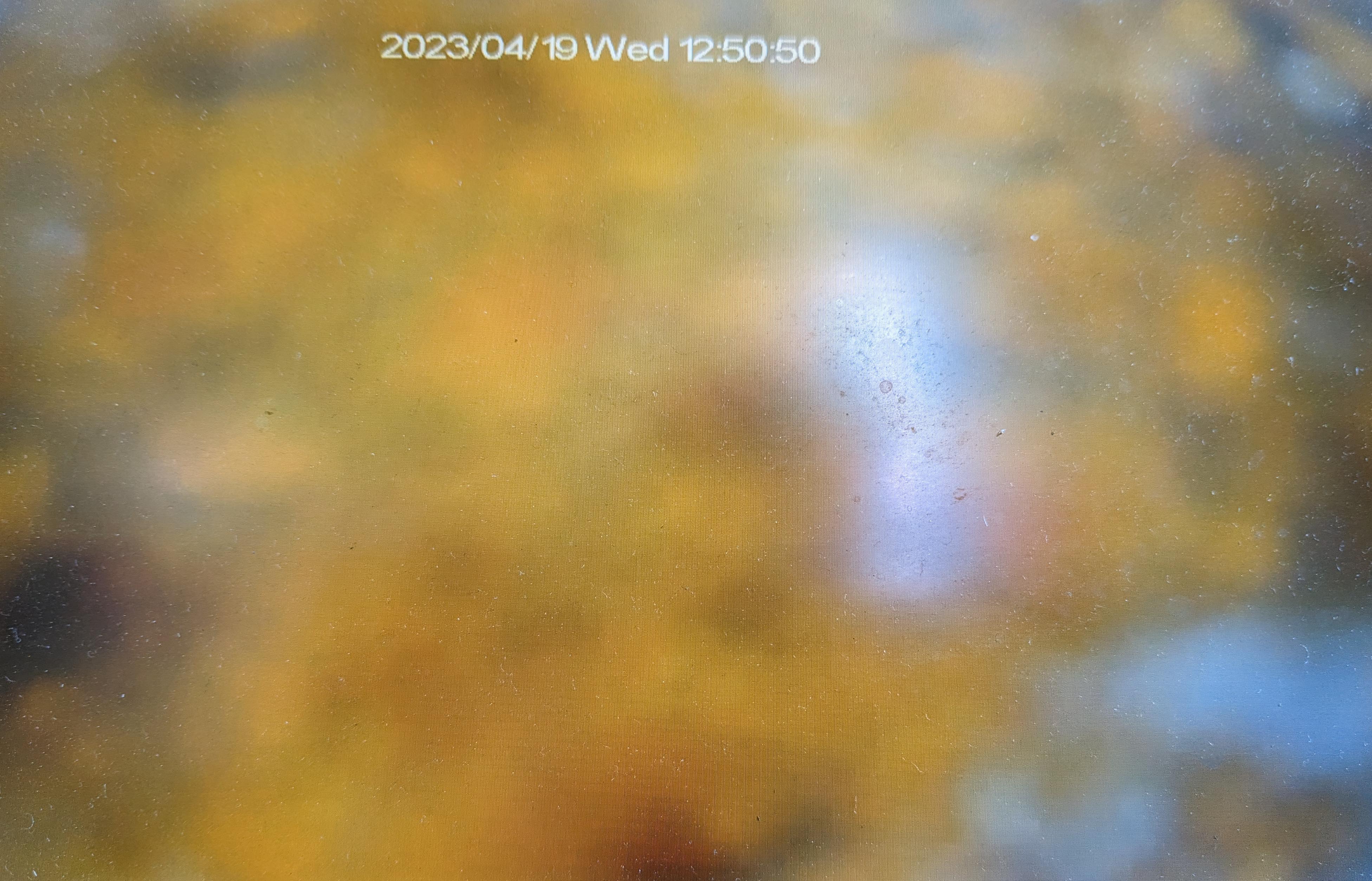 |
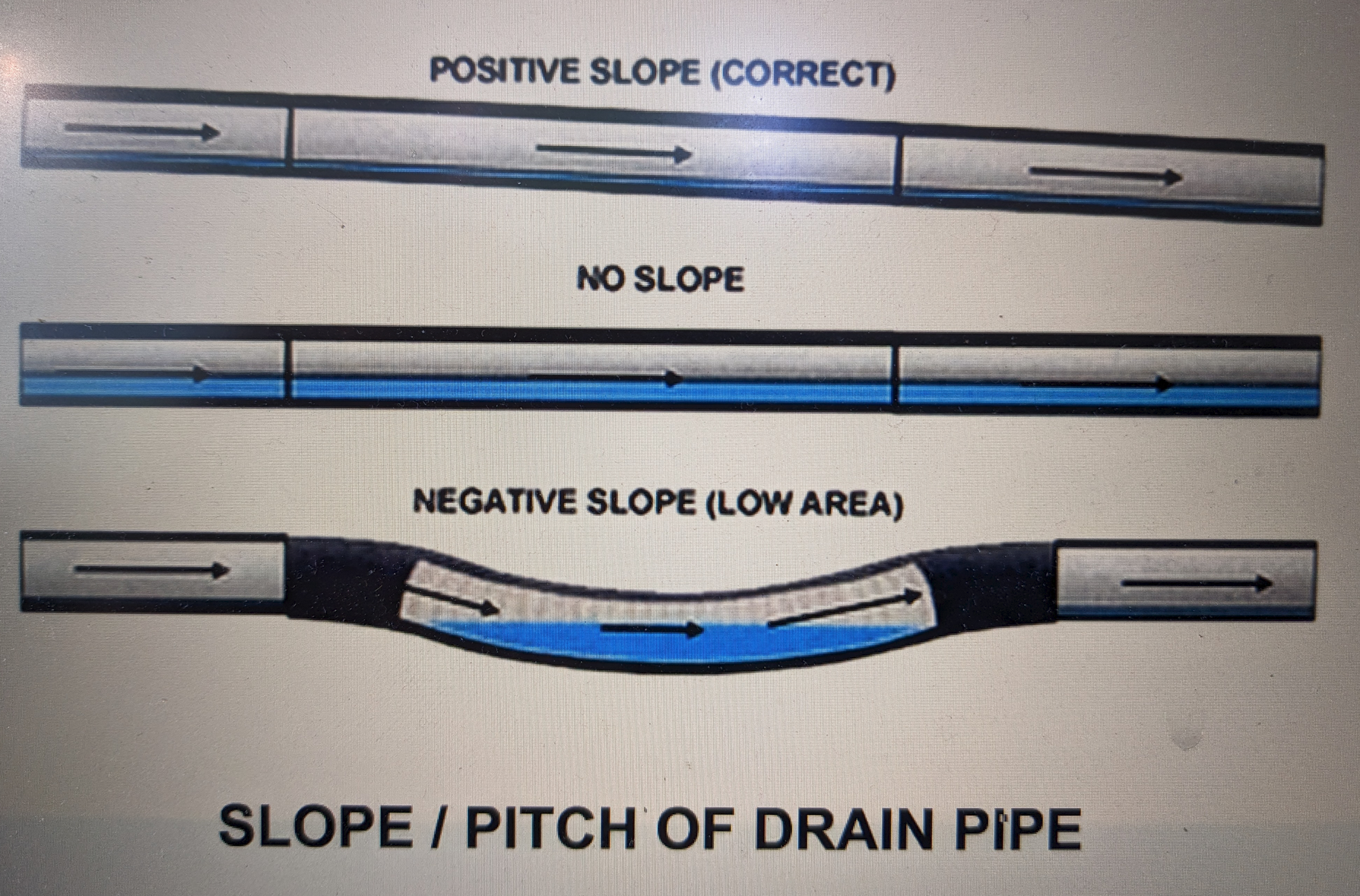 |
| Underwater Sag in the Line |
Clogs: The sewer camera can see clogged areas and what is causing the obstruction.
Collapsed pipes: Collapsed pipes can only be seen using a sewer pipe inspection camera. Collapsed pipes can lead to major blockages and backups.
Scale: Water contains minerals such as calcium, potassium an magnesium. The presence of these minerals in high concentrations produces scale in the cast iron sewer line. Corrosion deposits form over time and adhere to the inner wall of the sewer line. Over time the deposits build up where they effect the flow of waste water in the sewer line. The scale build up creates uneven areas in the pipe where debris can get stuck and clog the line. In fact over the years a pipes diameter can decrease over 25%.
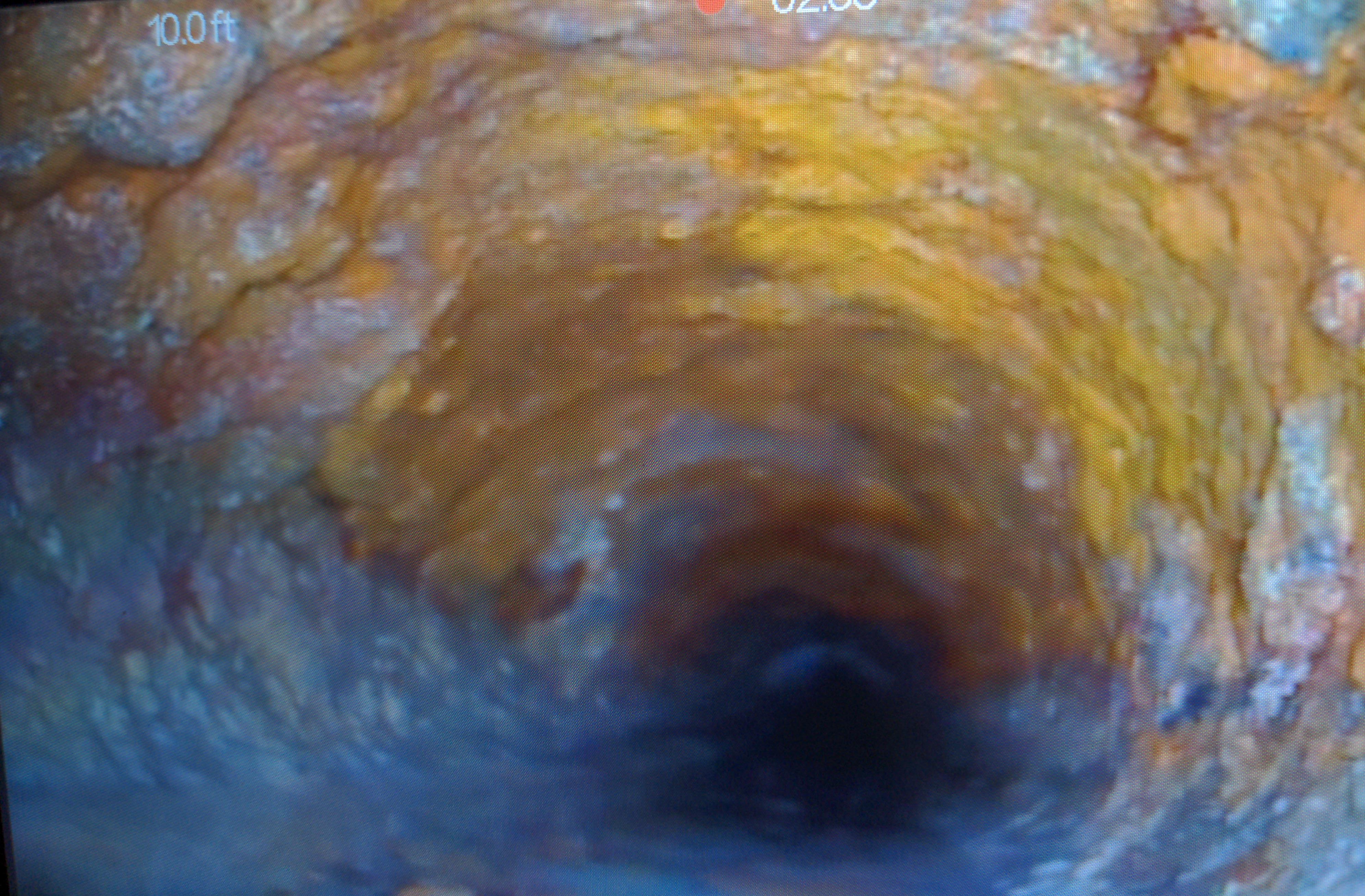 |
|
| Cast iron Heavy Scale |
Grease Buildup: Lets face it homeowners put grease down their kitchen sinks. Grease will stick to the sides of the sewer line. Over time the grease can get thick and cause pipe obstruction caused by debris getting stuck.
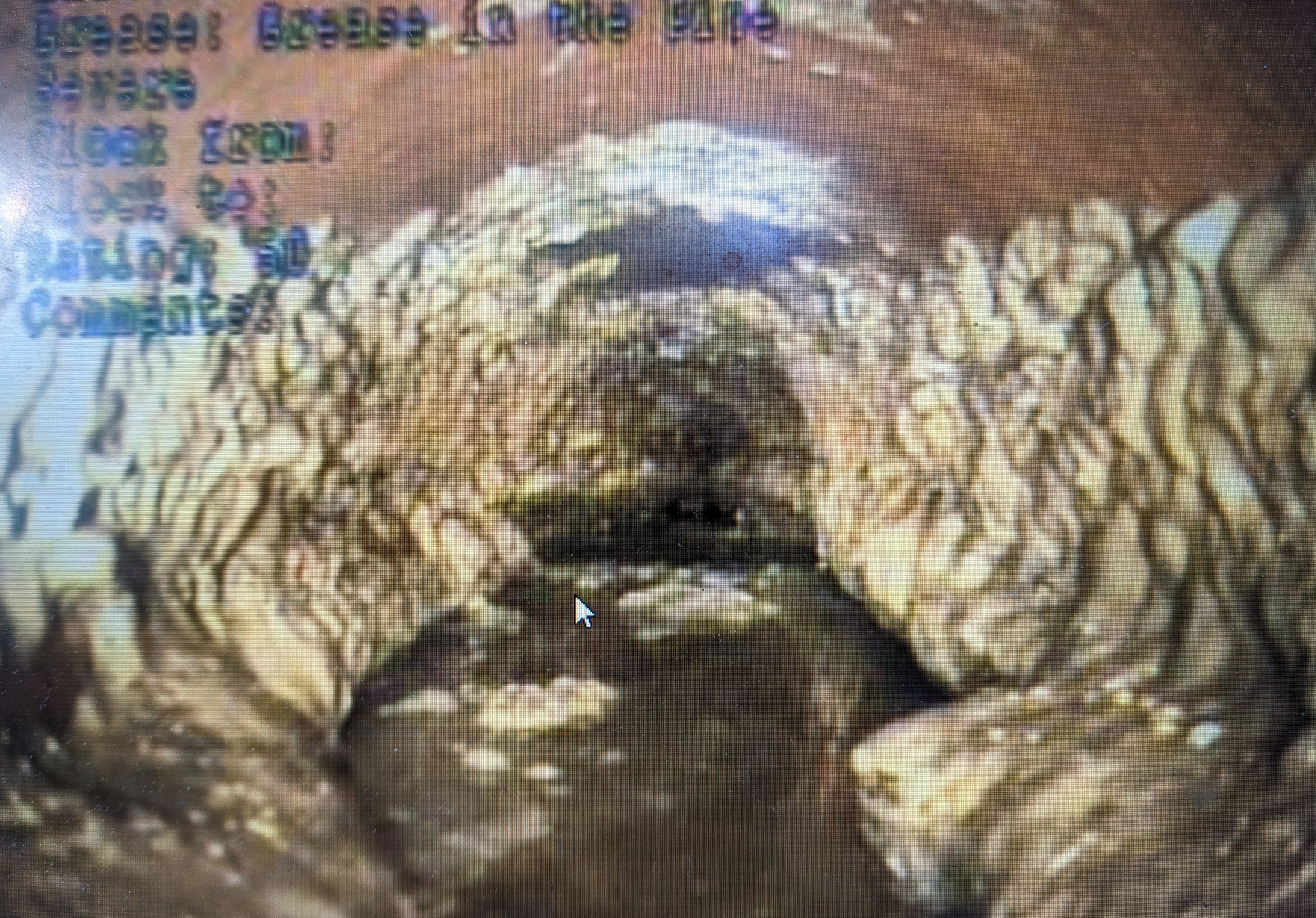 |
|
| Grease in sewer pipe |
